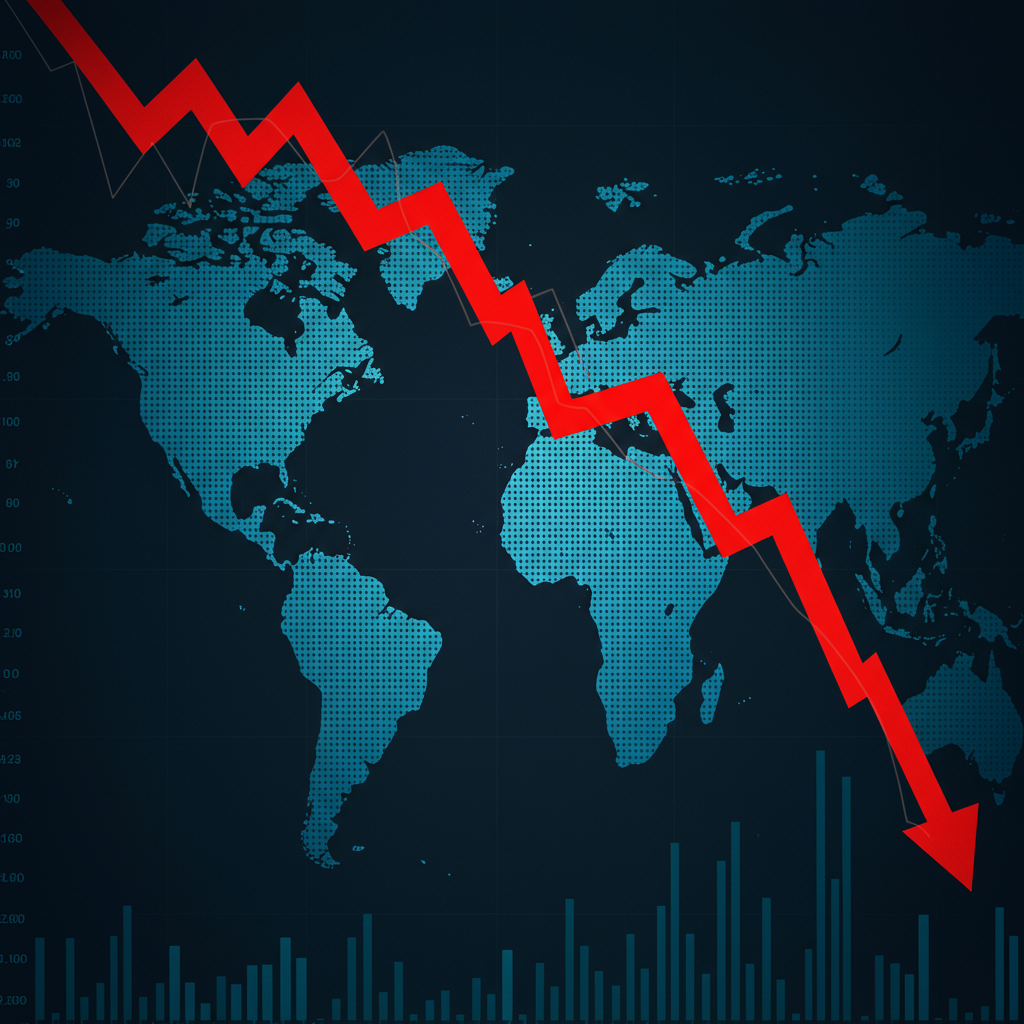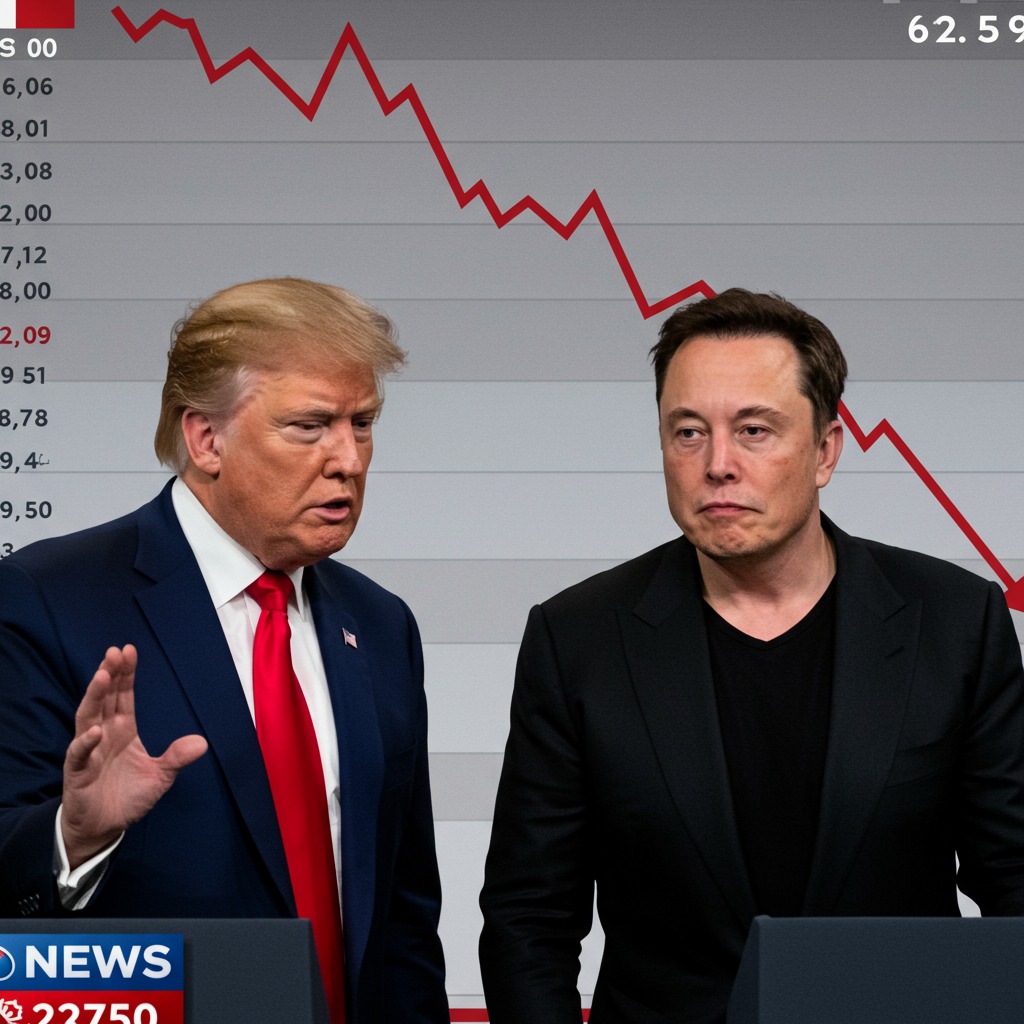Global stock markets retreated on Thursday, June 19, 2025, as geopolitical tensions in the Middle East continued to escalate, shaking investor confidence. The declines followed a mixed finish on Wall Street the previous day and came amid a backdrop of cautious central bank policies grappling with potential inflation risks from tariffs.
Markets React Globally to Rising Uncertainty
Major indices across Asia and Europe registered losses, while U.S. futures also edged lower. In Asian trading, Japan’s benchmark Nikkei 225 shed 1.0% to close at 38,488.34. Hong Kong’s Hang Seng saw a sharper drop, falling 2.0% to 23,237.74, particularly impacted by heavy selling in technology shares. China’s Shanghai Composite lost 0.8% to 3,362.11.
Elsewhere in the region, Australia’s S&P/ASX 200 remained largely unchanged at 8,523.70, while South Korea’s Kospi managed a slight gain of 0.2% to 2,977.74.
European markets mirrored the downbeat sentiment. France’s CAC 40 slipped 0.8% to 7,593.06, Germany’s DAX fell 0.9% to 23,141.82, and Britain’s FTSE 100 lost 0.5% to 8,797.24 in early trading.
In the United States, financial markets were closed for the Juneteenth holiday. However, futures for the S&P 500 and the Dow Jones Industrial Average were both trading 0.4% lower, signaling a potential weak open when trading resumes.
Mideast Tensions Fuel Market Jitters
The primary catalyst for the global market retreat was the intensifying conflict in the Middle East. Now in its seventh day, the conflict reportedly began with Israeli airstrikes targeting military sites, senior officers, and nuclear scientists in Iran. Recent developments include Iran’s foreign minister planning diplomatic meetings with European counterparts, while Israel reportedly carried out strikes on Iran’s Arak heavy water reactor as part of its actions against the country’s nuclear program. This escalating warfare has significantly heightened market volatility and risk aversion.
Central Banks Navigate Inflation and Tariffs
Amidst the geopolitical uncertainty, central bank decisions and future policy outlooks remain a key focus for investors.
The U.S. Federal Reserve held its key interest rate unchanged on Wednesday, as widely expected. While policymakers still project two rate cuts later in the year, they cautioned that potential higher import duties imposed by President Donald Trump could fuel inflation. They also anticipate economic growth to slow and unemployment to tick higher.
Fed Chair Jerome Powell indicated a cautious approach, stating that the solid state of the economy allows the central bank time to assess the true impact of tariffs on inflation, spending, and hiring before making further rate decisions. “We’ll make smarter and better decisions if we just wait a couple months… to get a sense of really what is going to be the passthrough of inflation and what are going to be the effects on spending and hiring,” Powell said.
The Bank of England was also expected to keep its key interest rate unchanged at 4.25% at its meeting on Thursday, having already implemented two rate cuts earlier in the year.
In contrast, the Swiss central bank cut its target interest rate by a quarter of a percentage point to zero on Thursday, citing easing inflationary pressures. This move highlights a trend among many central banks opting to ease borrowing costs as global growth faces threats from tariff uncertainty and geopolitical crises.
Despite relatively tame U.S. inflation near the Fed’s 2% target so far, economists warn that the full effects of potential tariffs may take months to appear. Recent upward pressure on inflation has also stemmed from a spurt in oil prices, directly linked to the Israel-Iran conflict.
Recent U.S. economic data presented a mixed picture for the economy. A report showed fewer workers applied for unemployment benefits last week, potentially signaling fewer layoffs. However, another report indicated that homebuilders broke ground on fewer homes than economists anticipated last month, suggesting that higher mortgage rates may be cooling the housing industry.
Oil Prices Remain Volatile
The volatility in oil prices directly reflects fears that the Middle East conflict could disrupt global crude supplies. Iran is a major oil producer and is strategically located near the narrow Strait of Hormuz, a critical chokepoint for much of the world’s oil shipments.
Benchmark U.S. crude rose slightly by 13 cents to $73.63 per barrel early Thursday, while Brent crude, the international standard, advanced 7 cents to $76.77 a barrel.
In currency markets, the U.S. dollar strengthened against the Japanese yen, rising to 145.46 from 145.13. The euro weakened against the dollar, costing $1.1476, down from $1.1484.
Notably, shares in Japan’s Nippon Steel Corp. bucked the trend, jumping 2.3% after the company announced the completion of its acquisition of U.S. Steel, a deal that had faced significant U.S. government opposition for over a year.



